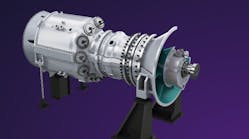The U.S. Department of Energy has awarded $264 million in funding for 29 projects to develop clean energy technologies and solutions that tackle the most challenging technical problems across the energy economy.
In total, 18 different universities across 14 states were awarded a combined $69.1 million, and eight DOE National Laboratories were awarded a combined $195 million across four years. Each project must align with the DOE Energy Earthshot initiative, which seeks to accelerate breakthroughs of more abundant, affordable, and reliable clean energy solutions to help the U.S. achieve a net-zero carbon economy by 2050.
“Our Energy Earthshots are game-changing endeavors to unleash the technologies of the clean energy transition and make them accessible, affordable, and abundant,” said U.S. Secretary of Energy Jennifer Granholm. “The Energy Earthshot Research Centers and the related work happening on college campuses around the country will be instrumental in developing the clean energy and decarbonization solutions we need to establish a 100% clean grid and beat climate change.”
The DOE’s Energy Earthshot initiative is comprised of seven unique tracks that focus on decarbonizing and advancing a specific sector of the energy economy. The seven tracks and their focuses include:
- Carbon Negative Shot – Remove CO2 from the atmosphere and store it at a meaningful scale for less than $100 per net metric ton of CO2 equivalent.
- Clean Fuels & Products Shot - Decarbonize the fuel and chemical industry through alternative sources of carbon to advance cost-effective technologies.
- Enhanced Geothermal Shot – Reduce the cost of enhanced geothermal systems by 90% to $45 per MWh by 2035.
- Floating Offshore Wind Shot – Reduce costs to $45 per MWh by 2035.
- Hydrogen Shot – Accelerate innovation and increase demand for clean hydrogen by reducing the cost by 80% to $1 per 1 kg of clean hydrogen.
- Industrial Heat Shot – Develop cost-competitive industrial heat decarbonization technologies with at least 85% lower greenhouse gas emissions by 2035.
- Long Duration Storage Shot – Reduce the cost of grid-scale energy storage by 90% for systems that deliver over 10 hours of duration.





